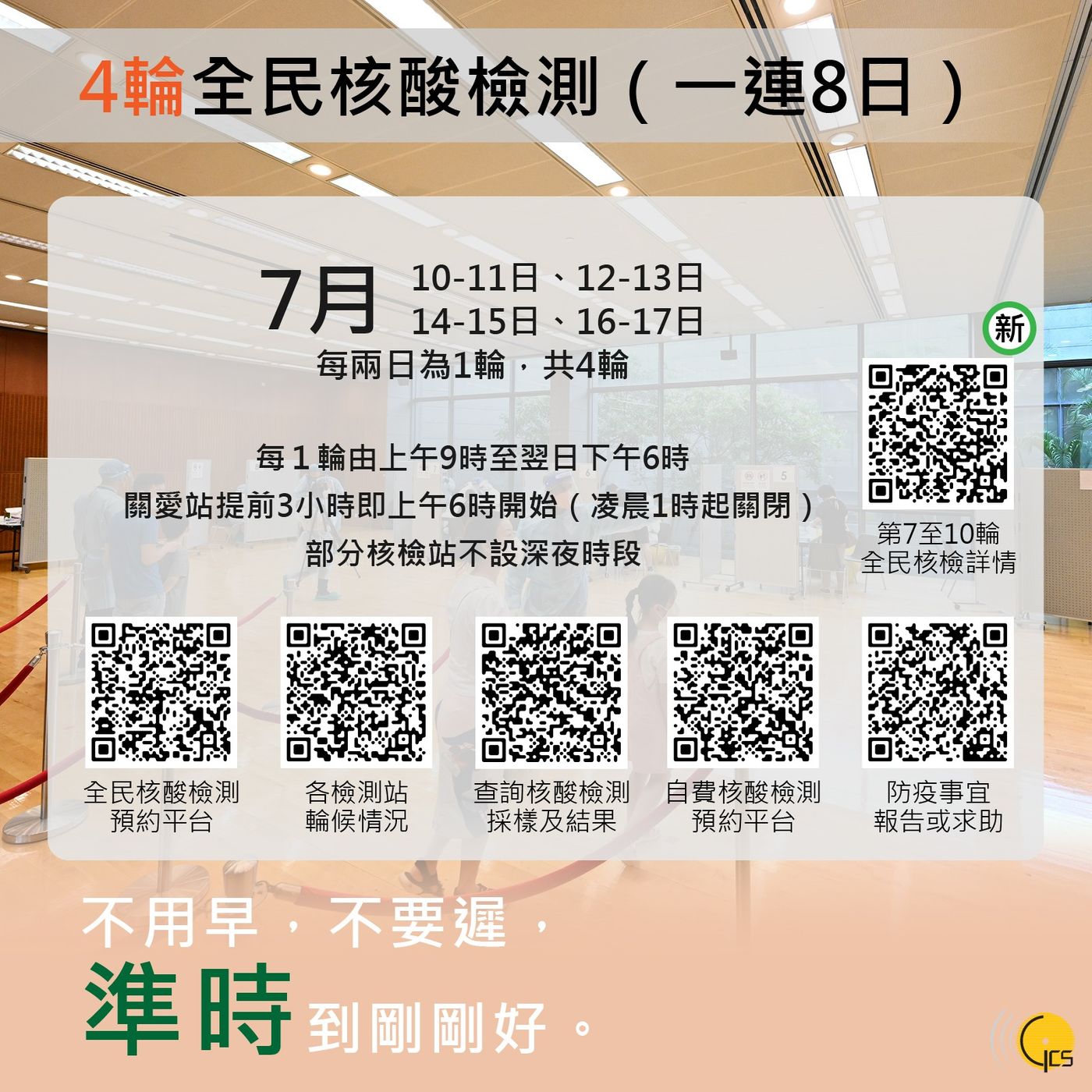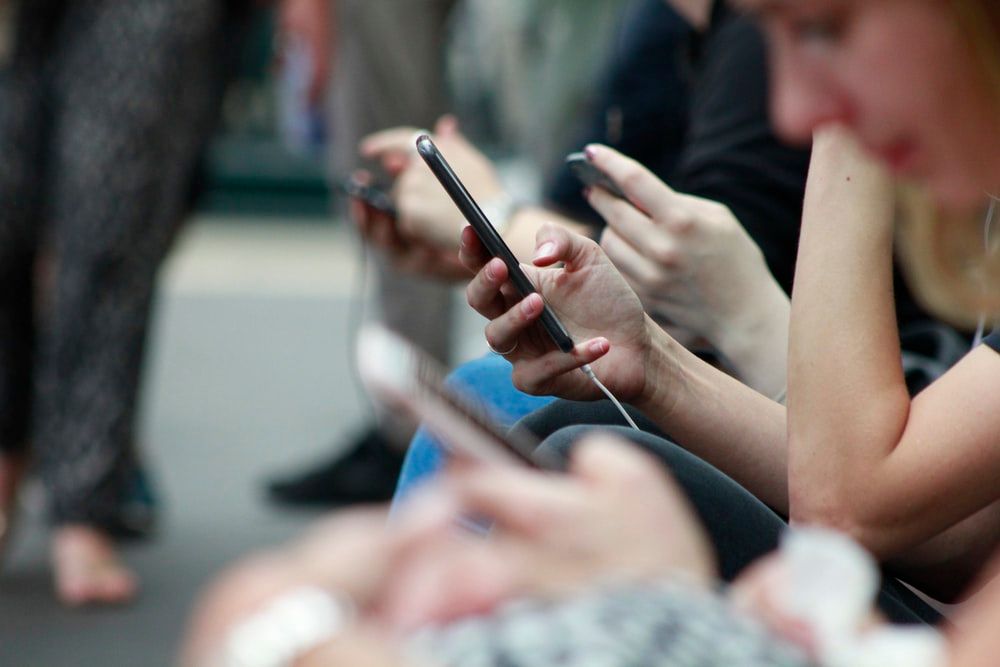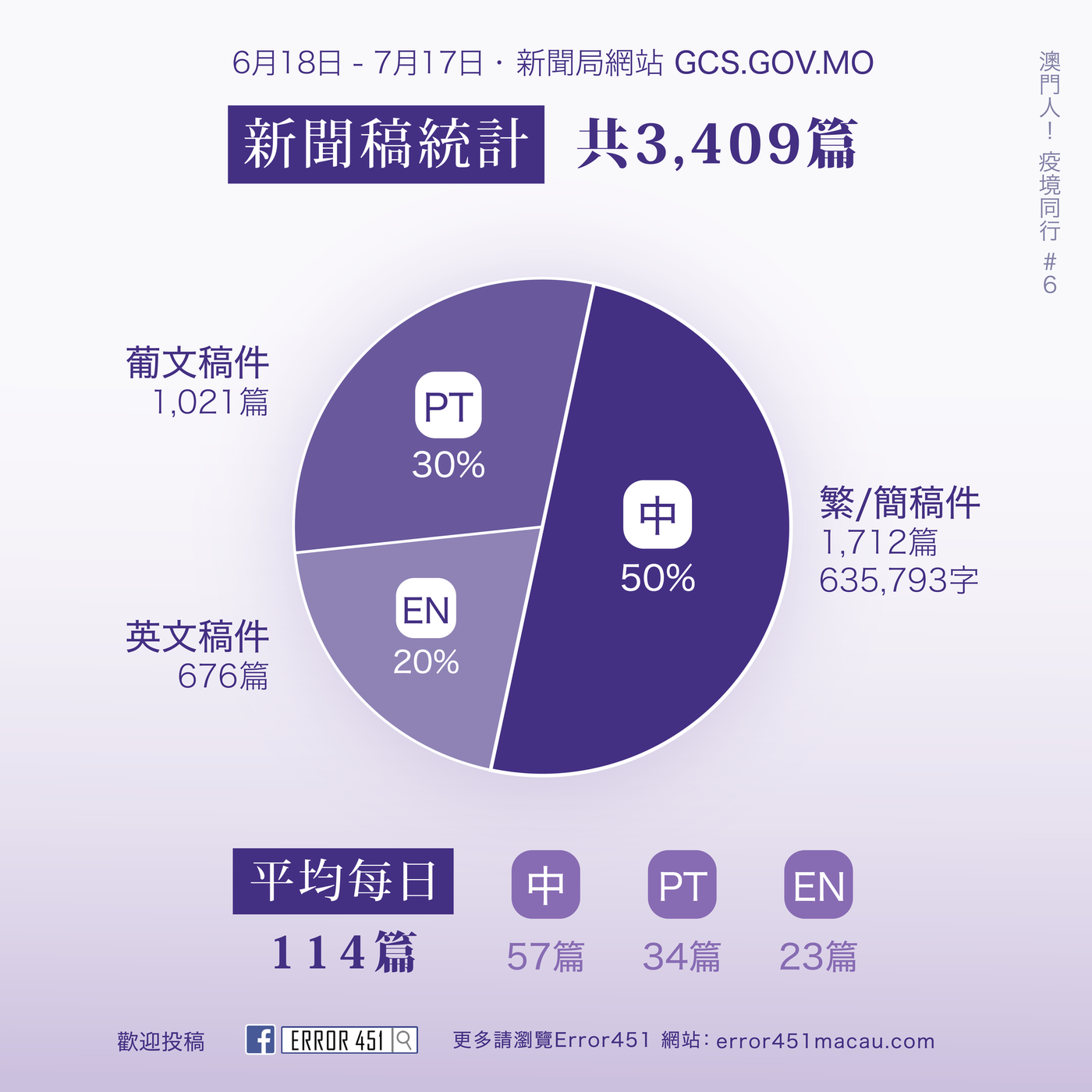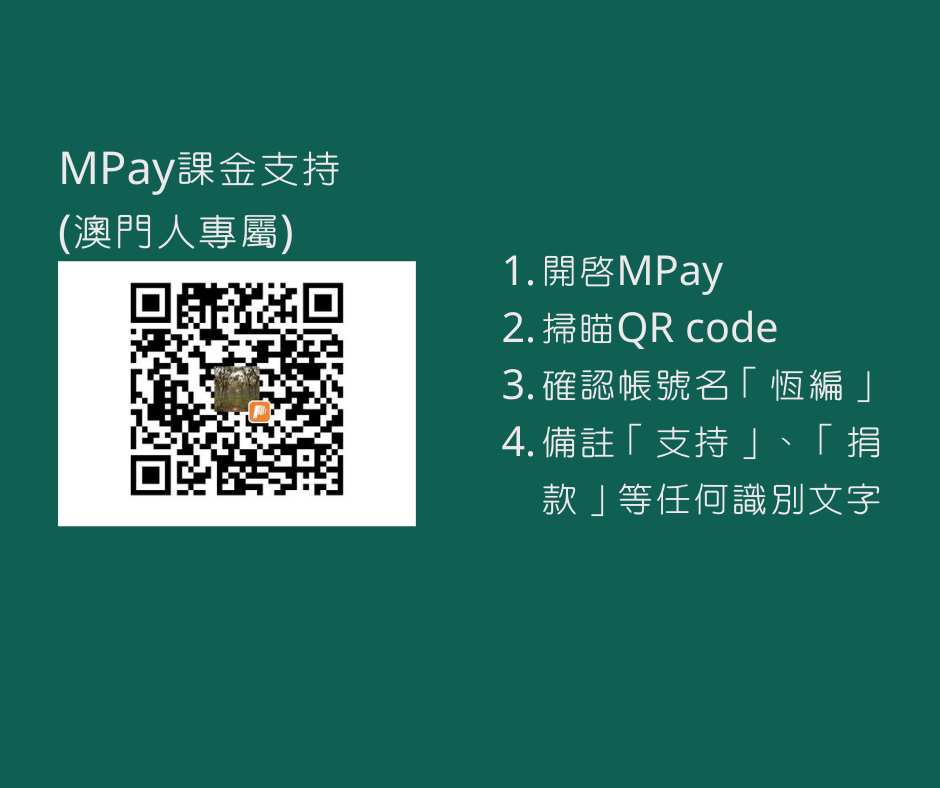
澳門90後|社會科學碩士|財經媒體|澳門研究| 生活瑣事
Reflections on Six QR Codes: Why Science Communication Beyond Science? |Communicating Beyond Science (with English version) #Submission 07
By: Anna Au (Public Health Scholar)
On July 8, 2022, when an information graphic published by the "New Coronavirus Infection Response and Coordination Center" appeared on my FB news feed, my neck involuntarily came close to the computer screen, and my eyes were so wide that they were about to fall out. Out, the brows are deeply locked into a staircase that allows doubts to enter my head.
I can't understand why six QR codes appear in one infographic at the same time. This cannot be a convenient or clear way of conveying information to citizens, as citizens have to spend more effort reading every word under each QR code in order to identify and scan the correct QR code and find exactly what they need services and information. Under the circumstance that this wave of epidemics has already caused a lot of pressure, citizens are under another layer of unnecessary pressure.

When all kinds of COVID-19 information is still circulating and forwarding, and this information graphic is to let citizens find the correct information faster, six QR codes appear at the same time. The effect it achieves may only make the citizens more dazzled. , and even make the public scan the wrong QR code, and then spend time nervously reading the information pictures and texts to find the correct one. Isn't this the opposite effect?
When truthful and useful information cannot be easily found, this endless stream of information can only be annoying and frustrating. Just think about it, we are looking for useful information every moment, rarely find relevant information, the next day it is out of date and no longer applicable, and then have to search again. This is a vicious cycle of information, there is no escape and no alternative. No wonder everyone has a lot of opinions about the government's approach.
But the focus of today's discussion is not on the government's anti-epidemic measures, but on how the government releases key information. Before getting to the point, we must understand what is science communication.
science communication
Simply put, science communication is the profession of explaining science and related knowledge to the public. The four main purposes of science communication are: 1. To make the phenomena of everyday life accessible to the public and to empower them to make autonomously informed decisions based on scientific evidence; 2. To inspire interest in STEM (Science, Technology, Engineering, Mathematics) and related career development; 3. to build the foundations of open and rational dialogue; and 4. to consolidate the democratic process.
In response to different target audiences, the content, format, language, tone, and even the type of science communicator need to be changed in response to the set goals. During the COVID-19 pandemic, the target audience undoubtedly includes people of all backgrounds, because everyone understands firsthand that in order to survive the pandemic, everyone must act on the best scientific evidence available.

During the 1980s, many scientific institutions or scientists used the "information deficit model" to explain the necessity of science communication. Under the assumption of this model, the public has a demand for relevant knowledge due to the lack of important scientific knowledge of scientific institutions or scientists, which means that information is only unidirectionally transmitted from scientific institutions or scientists to the public.
The information deficit model has been criticized by many science communicators because it ignores the complexities of society and treats the general public as only passive recipients of information. With the rise and popularity of the Internet in the late 1990s and early 2000s, these critiques of the information-deficit model became even more true; then smartphones and wireless networks continued to spread, social media and instant messaging messaging) has also penetrated into our daily life.
Since then, we have continued to seek and receive information on a daily basis, and even though we know it may be wrong or incomplete, there is hardly a topic we haven't heard of at all.
So what exactly does this mean for science communication?
The "contextual model" provides a better understanding of the real dynamics in science communication than the information deficit model. The context model treats each science communication activity as a different "situation", and because different contexts have different characteristics, science communicators must view science communication as a dialogue with different audiences (e.g. audience, listeners, readers, etc.) . Different people will receive the same information in different ways, and they will have different understandings and ideas about the same information, so it is wrong to simply think that there is a one-size-fits-all way of scientific communication.

Therefore, science communicators must first understand the nuances of their audiences, listen to their audiences, understand their different backgrounds, interests, needs, and what is important to them, and then effectively use different ways to respond to different "situations". Practice Science Communication.
How should governments practice science communication?
Let me explain further with the official infographic I mentioned at the beginning of the article. The purpose of this infographic is to allow citizens to find the services they need on the Internet, but citizens really need to spend too much time reading the words in the picture carefully to find the correct one from the six QR codes, and then use the A mobile phone scan is required to be directed to the website of the desired service. Obviously, it is neither concise nor easy to understand, and citizens cannot obtain information quickly and accurately; on the contrary, good information graphics are concise and allow the audience to find information and guidance the moment they see it.
To improve this infographic, designers should reduce the number of QR codes to one, and this QR code should guide citizens to a page where they can choose the required service among the six services mentioned in the original image. In addition, the user experience of viewing infographics on a mobile phone or computer screen is very different from viewing a poster on a wall. If you want to publish infographics and texts on social media to show the steps and processes (for example: the steps to use various masks correctly and wash your hands correctly), you can make the photos of each step into individual infographics and texts that fit the screen display ratio according to the situation.

In addition, whenever new preventive measures are implemented, the government should simultaneously issue relevant detailed guidelines. During June, citizens can already buy KN95 and equivalent masks. About a month later, in response to community outbreaks, the government required citizens to wear KN95 masks. But soon after the new rule was introduced, its serious flaws became apparent.
There was about a month between the mass sale of KN95 masks and the outbreak in the community, but the government did not have enough time to produce and publish easy-to-understand content to explain the scientific nature of such masks to the public, so citizens had to search for information about KN95, Information on N95, FFP2 and KF94 masks. When the government finally introduced the "further guidelines", citizens had already decided which type of mask is most suitable for them based on the information they had consulted, so the government's "further guidelines" were actually "further disturbances" to citizens' lives.
If the government had seized the opportunity to release information in June to prepare citizens for a community outbreak, the current "further dissatisfaction" among citizens would probably not have been as strong.
In addition, since there are many migrant workers in Macau, another thing the official should do is to release information in other non-official languages at the same time, so that different communities can receive key information simultaneously. So far, most of the information is still mainly in Chinese, and translating the information into other languages seems to be an afterthought to the official, or it has to rely on the spontaneous organization of the relevant community. translate.

In such a situation of unequal information, it is impossible for a community that is not fluent in Chinese to act on preventive measures as quickly and accurately as local Chinese users. Therefore, if preventive measures are to be successful, preventive information needs to be provided in a variety of ways. Language release.
The Secret of Science Communication
Of course, understanding and being able to explain scientific phenomena is one of the prerequisites, but good science communication goes far beyond that, and this article only touches on this intricate profession. It is true that good science communication must be people-oriented, so the first step is not to create content, but to actively consult and listen to the opinions of the audience and understand their difficulties, and then use empathy to understand them. Create content to respond and answer people's needs and questions.
Finally, I want you to remember the secrets of science communication: listening and empathy.
#Number of articles: 1️⃣2️⃣3️⃣
🔴 Patreon |👍Facebook Page |👂 Podcast |📣 Call for Papers |📨E -Newsletter

Like my work?
Don't forget to support or like, so I know you are with me..

在帝國邊陲講故事

四個社會科學和歷史背景的作者,嘗試訴說一座名叫「澳門」的看不見的城市。它的故事不止關乎自身,也關乎背後的帝國和邊陲。 👇我們的故事|Podcast|免費電子報|Patreon https://linktr.ee/macaology_empire
Comment…